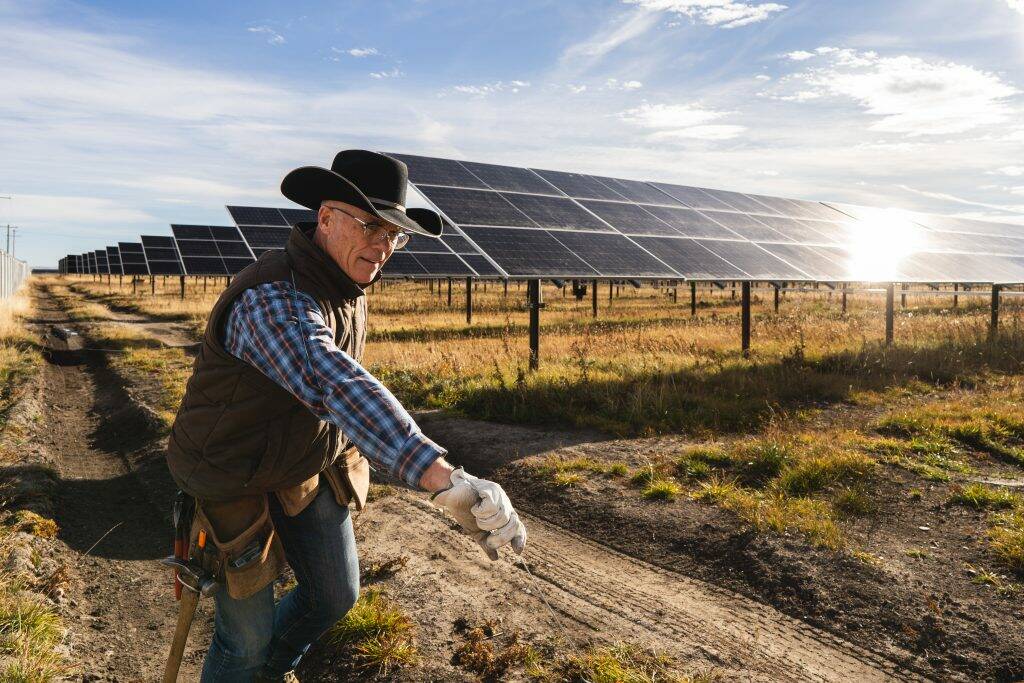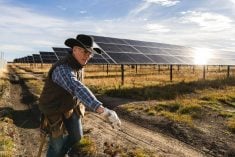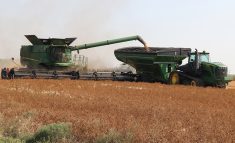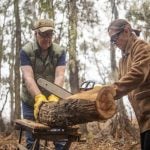DEADWOOD, Alta. – It’s the middle of December, the fields are frozen solid and Richard Rice is planning to seed his fescue crop.
The former Oregon vegetable farmer hasn’t forgotten he’s now living in northern Alberta. He’s simply trying to grow a crop in the middle of a drought.
“We were disgusted by the lack of spring moisture,” he said.
By seeding in the winter, he hopes the grass will be able to take advantage of spring moisture and germinate.
Two years of drought and no crop forced Rice to get creative.
Read Also

Support needed at all levels for high-value solar projects
Farmers, rural municipalities and governments should welcome any opportunity to get involved in large-scale solar power installations, say agrivoltaics proponents.
“The drill skids along the top and makes a trench. The snow and dirt fall back in on it. It seems to work. That’s the amazing part.”
Last year Rice seeded 50 acres of perennial rye grass and 70 acres of hard fescue in the winter. It germinated and grew when other crops didn’t.
This year, depending on the amount of snow, he may wait until March to seed.
Water has been the biggest frustration since Jill, Richard and daughter, Alisa, moved north from Oregon in 1994.
Before they moved, Richard studied yield and production data from the former Agriculture Canada Research Station in Beaverlodge, Alta. Based on that analysis he thought they would be able to make a living farming in Alberta’s Peace River region.
“We decided based on that data we could make it work. When it rains it worked very, very well. When it doesn’t rain it works quite poorly.”
Water was never an issue in Oregon, where there is always enough rain for crops and ground water for the wells.
While the Rices noticed dugouts at the sides of fields and next to houses when they scouted the Alberta area, it never dawned on them that’s where their drinking water would come from.
Jill remembers the time she couldn’t figure out why water wasn’t coming out of the bathroom tap. When she took off the screen, out popped a big, fat bloodsucker.
“We didn’t move here thinking it was utopia,” Richard said.
“It’s not, but it’s a good place to live and raise our daughter.”
In Oregon, the couple grew sweet corn, bush beans, beets, canning peas, onions, broccoli and potatoes, and some grass and clover seed.
With the rising price of land and urban encroachment from nearby Portland, the couple decided to move.
“This country has a lot of opportunity,” said Jill. “We moved up here primarily because of the price of land.”
In Oregon land sells for $8,000 an acre, compared to $250 in Deadwood.
For the first few years they had exceptional crops, yields sometimes surpassing 800 pounds per acre. They successfully experimented with several grass crops not normally grown so far north. They have grown Kentucky blue grass, tall fescue, hard fescue, chewings fescue, sheep fescue and perennial rye grass. Clover is the most recent addition.
“When you look at the price of wheat, canola and oats, you’ve got to look at different opportunities,” said Jill.
In 1996 and 1997 their tall fescue crops were “awesome.” In 1998 they were “putrid,” Richard said.
By hand weeding the pedigreed seed crops twice, they are able to capture top prices because of the exceptionally clean seed.
Most of their grass seed is sold to American companies that are willing to pay higher premiums for cleaned, bagged seed if it is delivered early in the fall instead of the winter. The Rices built their own grass seed cleaning plant to capture that premium.
“We wanted to take advantage of the early markets,” said Richard.
It wasn’t part of their original plan, but now that the cleaning plant is built, they’ve started custom cleaning for other producers. The nearest rival grass cleaner is in Fairview, 150 kilometres away.
“I believe it’s a good thing,” he said.














